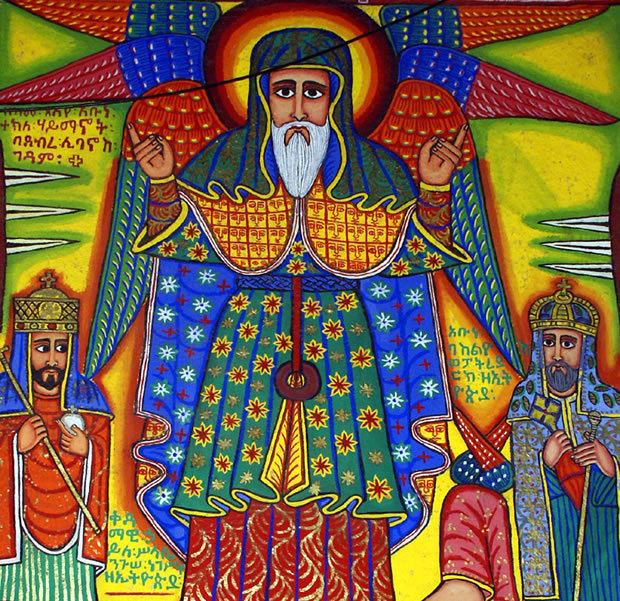 |
| One of the famous monolithic churches of Lalibela, built by the Zagwe Dynasty |
From Aksum to Zimbabwe, Casablanca to Cape Town, learn about the fascinating civilizations and stories of Africa on the first dedicated Pre-Colonial African history podcast.
Wednesday, July 28, 2021
S2E20: Closing the Book + Season 3 Announcement
Monday, July 19, 2021
S2E19: The Fall of the Aksumite Empire Part 2: Gudit, the Woman who Destroyed an Empire
We've reached the end of our season on Aksum. As the Aksumite empire collapses back into a chaotic state of struggle between the church, nobility, and king, a mysterious woman from the north descends on the kingdom. Her name was Gudit, a rough portmanteau of Judith, the biblical woman who led an assassination of an Assyrian general, and Gud, the Ge'ez word for monster.
The details of Gudit's life as presented by scholars are somewhat contradictory. One of the most well known stories that attempts to explain Gudit's future enmity towards the Aksumite church and state claims that Gudit's branch of the royal family fell on hard financial times when they were passed over in the royal succession. To earn money, Gudit began to work as a prostitute. However, Gudit was no woman of the night, but is rather thought of as a highly desired escort. When Gudit received the attraction of an Aksumite deacon, she rejected him, but offered him the challenge of making for her gilded sandals and a gilded parasol to win her affection. He accepted the challenge, but decided to use a holy relic, a golden cloth donated to the church by Saint Ezana himself, to fashion these items. When the locals of Aksum discovered the deacons sacrilegious actions, they blamed Gudit for their destruction. An angry mob mutilated one of her breasts to ensure that she could never seduce men with her beauty again before exiling her from the city.
| The Queen Gudit Stele Field. Despite its name, the site's actual relationship to Gudit herself is tenuous. Photo Courtesy of Wolff Chronicles |
Monday, July 5, 2021
S2E18: The Fall of the Aksumite Empire Part 1: Anbasa Wedem, Wise Regent or Cruel Usurper?
Monday, June 21, 2021
S2E17: Degna Jan, the Last Great King of Aksum
Hey everyone, I hope you enjoyed the latest episode of the History of Africa podcast. This latest episode focuses on Degna Djan, one of the last kings of Aksum, and, somehow, one of the greatest kings in Aksumite history. During his rule, he oversaw an Aksumite renaissance, leading to the final period of Aksum as the hegemon of East Africa.
 |
| Lake Hayq, one of the likely locations of the Late Aksumite capital of Ku'bar |
 |
| Tekle Hayamanot, a prominent Ethiopian saint, abuna, and historian, depicted in a church mural |
Monday, June 7, 2021
S2E16: The War for the Dahlak Islands and the Aksumite Dark Age
Hello everyone, I hope you enjoyed the latest episode of the podcast. This one was admittedly a little weird because of the circumstances surrounding the history being discussed. The podcast generally tries to focus on history from a narrative perspective, telling the podcast as a linear story. I personally like this format because it makes the show more digestible, personable, and, frankly, entertaining. However, due to the fact that this episode focuses on a historiographic dark age in Aksumite history, writing in a narrative style for this episode was simply impossible. However, the era which encompassed around 600-880 AD, despite being a time with few surviving records, is a crucial era for understanding long-term trends affecting the Aksumite state, economy, and society during its waning years.
The general trend of the era in Aksum during this era was one of decentralization. Economically, the model of centralized cities as the basis of the Aksumite economy declined. Rather than the trade and sale of finished goods and exotic materials, the new Aksumite economy was dominated by subsistence farming of teff. Politically, the once autocratic power of the Aksumite negus was divided among the increasingly powerful Tewhahedo Church and local landowners.
 |
| A Village in the Dahlak Islands |
Monday, May 24, 2021
S2E15: The Somali Mercantile Age
 |
| A small version of a Somali woven ship, called a beden. |
| An early modern depiction of a larger Somali ship from a European atlas |
Monday, May 10, 2021
S2E14: The Rise of Islam (From the Aksumite Perspective)
I hope you all enjoy the latest episode of the History of Africa podcast. This episode focuses on the Rise of Islam, but from the perspective of the Aksumites.
.jpg/1920px-Hijra_Abyssinia_(Rashid_ad-Din).jpg) |
| Depiction of Armah rejecting the demands of Amr ibn al-As to turn over the Muslims illus. Rashid ad-Din Sinan |
In the name of the Father, and of the Son and of the Holy Spirit, I am Hatsani Danael, son of Dabra Ferem. When the people of Wolqayt devastated the land and came to Aksum, I expelled them, treated them harshly, and killed them. I captured 102 of their foals and 802 of their cattle. And I exiled the survivors. -Inscription attributed to Daniel
However, Daniel was, if anything, too successful at his task. Soon after he defeated the bandits, Daniel himself began ravaging the countryside himself, robbing the locals of their livestock. When Armah dispatched an army now to stop this looting, Daniel turned on Armah. He declared himself to be the new king of Aksum, and his looting soon transformed into an outright revolt.
 |
| Map of the two migrations of Muslims: the first to Aksum and the second to Medina |






